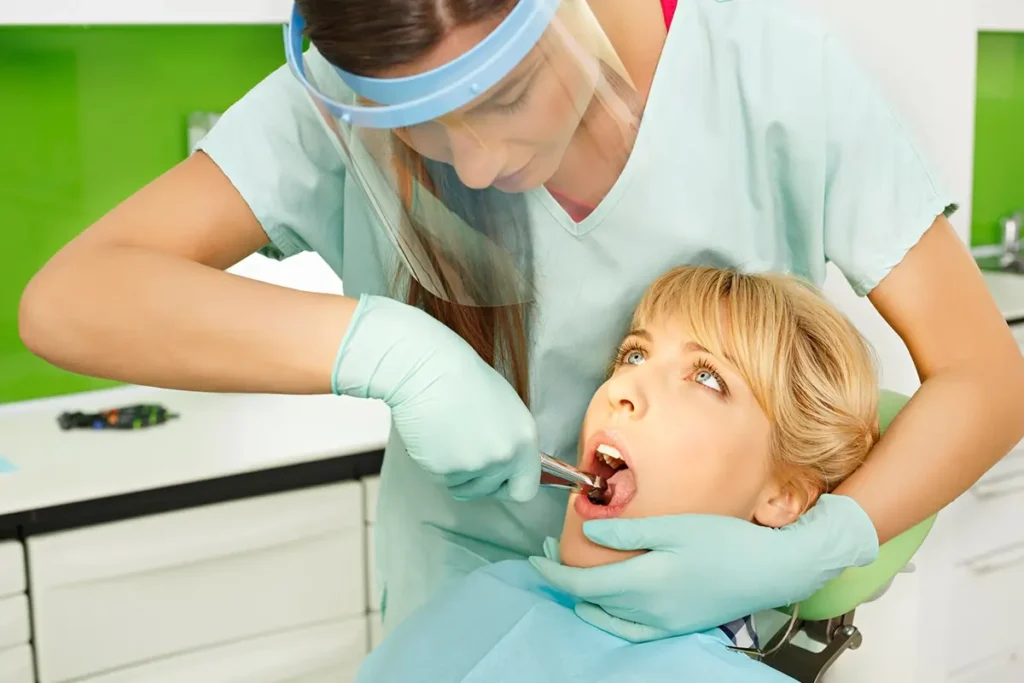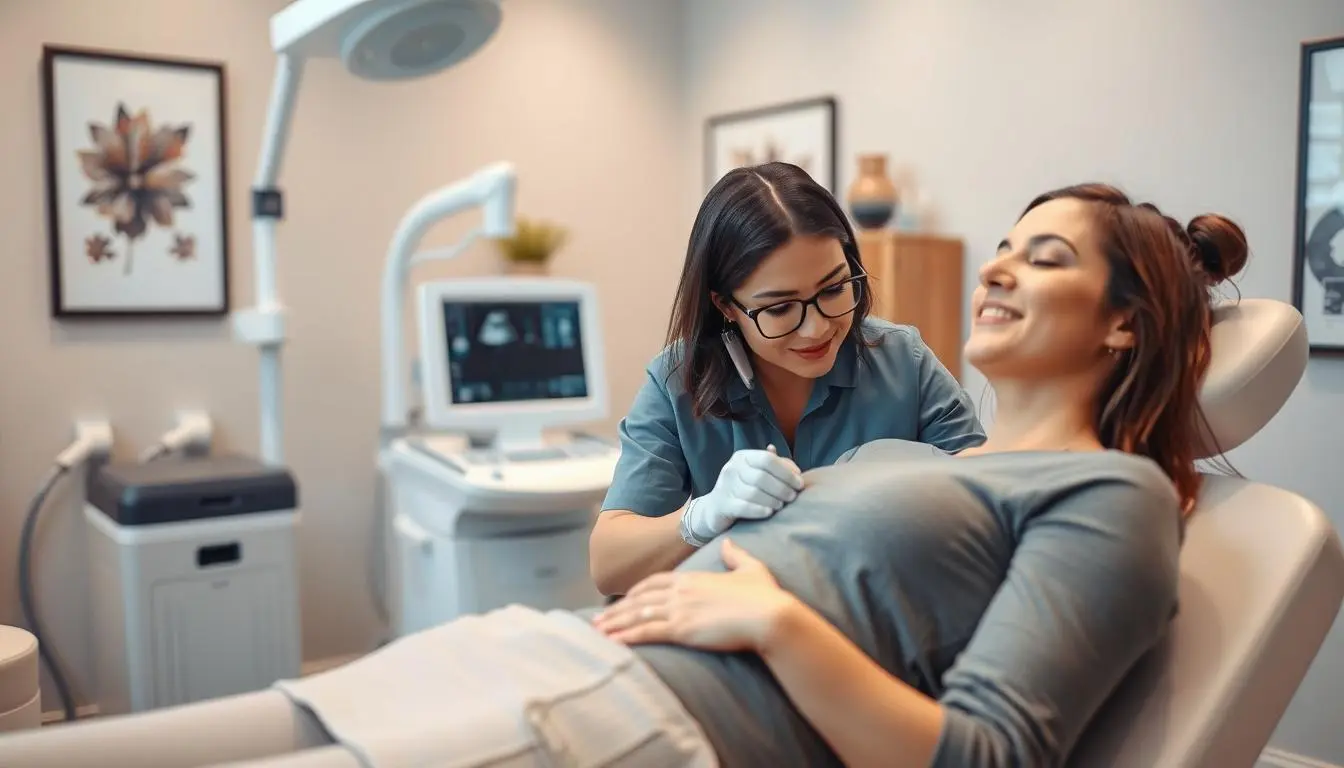Nearly 5 million Americans have wisdom teeth removed each year. It’s important to follow the right diet after surgery for a quick recovery.
You might wonder, Can You Drink Soda After Wisdom Teeth Removal? It might seem okay, but it’s not. The carbonation and sugar in soda can mess with your healing. It can even cause dry socket, a painful issue that makes recovery harder.
Having a good diet after surgery is key to avoiding problems. Knowing how your food choices affect healing is very important.
Key Takeaways
- Avoid soda after wisdom teeth removal to prevent dry socket.
- Follow a recommended postoperative diet for a smooth recovery.
- The blood clot plays a crucial role in the healing process.
- Dietary choices significantly impact recovery after wisdom tooth extraction.
- Carbonated drinks can dislodge the blood clot.
Also Read: Step-by-Step Guide Wisdom Teeth Food Timeline After Surgery
Understanding the Wisdom Teeth Removal Process

When you get your wisdom teeth removed, it’s key to know what happens and what recovery is like. Wisdom teeth are the four permanent teeth at the back of your mouth. They are removed through a surgical procedure.
What Happens During the Extraction Procedure

The first step is getting anesthesia to numb the area. Then, your oral surgeon makes an incision to expose the tooth and bone. The tooth socket might be taken out in parts or all at once.
After that, the area is cleaned, and stitches might be used to help it heal.
Why Blood Clot Formation Is Critical
Blood clotting is very important for healing after wisdom teeth removal. The clot protects the bone and nerve endings. It helps the area heal.
If the clot gets dislodged or dissolves, it can cause dry socket. This is a painful condition that can slow down recovery.
Normal Timeline for Healing and Recovery
The healing process after wisdom teeth removal usually follows a set timeline. The first 24 hours are crucial for blood clot formation. After that, swelling and discomfort start to go down.
Most people can get back to normal activities in a week. But, it can take a few weeks for full recovery.
| Day | Healing Stage | Common Symptoms |
|---|---|---|
| 1-2 | Initial Healing | Swelling, discomfort, bleeding |
| 3-4 | Swelling subsides | Mild discomfort, bruising |
| 5-7 | Progressive healing | Minimal discomfort, improving mouth opening |
How Your Post-Surgery Diet Affects Healing
Your diet after wisdom teeth removal can speed up or slow down healing. Eating well is key for recovery. It gives your body the nutrients it needs to fix and grow tissues.
The Connection Between Nutrition and Recovery Speed
Good nutrition helps your body heal by giving it important vitamins, minerals, and proteins. Foods rich in vitamin C, zinc, and protein are vital for fixing wounds and repairing tissues.
- Vitamin C: Enhances collagen synthesis and improves wound strength
- Zinc: Supports immune function and tissue repair
- Protein: Essential for healing and tissue regeneration
Common Dietary Mistakes That Delay Healing
Some foods can slow down healing. Eating hard, spicy, or sharp foods can bother the area where your teeth were removed.
Here are some foods to avoid:
- Eating hard or crunchy foods that can dislodge blood clots
- Consuming spicy or acidic foods that can irritate the extraction site
- Drinking through a straw, which can create suction that dislodges blood clots
General Guidelines for Eating and Drinking After Surgery
To help your body heal well, follow these tips:
- Stick to a soft food diet for the first few days
- Avoid hot, spicy, or sharp foods
- Choose lukewarm or cool beverages
- Drink plenty of water to stay hydrated
Can You Drink Soda After Wisdom Teeth Removal?
Many people wonder if they can drink soda after getting their wisdom teeth removed. This is because the surgery needs careful care to heal right. Drinking soda can make things harder.
What you drink is very important after surgery. Soda, being fizzy, can cause problems. It might mess up the healing process.
The Risks of Consuming Carbonated Beverages
Drinking fizzy drinks like soda can dislodge the blood clot. This can lead to dry socket. Dry socket is painful and slows down healing.
Sodas also have a lot of sugar. This can grow bacteria and cause infection. The acid in some sodas can irritate the wound, making recovery harder.
How Long You Should Wait Before Having Your First Soda
It’s best to wait 3 to 5 days before having soda. But, this time can change based on how you heal and the surgery type.
| Day Post-Surgery | Recommended Beverage | Reason |
|---|---|---|
| 1-3 | Water, clear broths | Minimize risk of dry socket and infection |
| 4-7 | Gradually introduce non-carbonated, non-acidic drinks | Support healing without irritating the extraction site |
Potential Modifications If You Must Have Soda
If you really want bottle of soda, try a flat version. Or pick non-carbonated drinks that taste good but are safer.
Looking for healthier drinks that taste alike soda can also help. They won’t hurt your healing process.
Why Carbonation Is Dangerous for Extraction Sites
Carbonation can harm the healing of wisdom teeth removal sites. It does this by interfering with the healing process in several ways. This is because the bubbles in carbonated drinks can affect the healing site.
How Bubbles Can Dislodge Blood Clots
A blood clot forms at the extraction site to help it heal. But, the bubbles in carbonated drinks can knock this clot loose. This leaves the site open, causing pain and slowing down healing.
Understanding Dry Socket and Its Painful Consequences
Dry socket, or alveolar osteitis, happens when the blood clot is lost or doesn’t form. It’s a painful condition that exposes the bone and nerves. Drinking carbonated beverages increases the risk of getting dry socket.
| Complication | Description | Risk Factor |
|---|---|---|
| Dry Socket | Painful condition due to dislodged or missing blood clot | Carbonated beverages |
| Blood Clot Dislodgement | Clot displacement due to bubbles in carbonated drinks | Carbonation |
| Delayed Healing | Healing process slowed due to complications | Carbonated and sugary drinks |
The Physical Impact of Carbonation on Healing Tissues
Carbonation does more than just dislodge blood clots. It also irritates and discomforts the healing tissues. This can cause inflammation and slow down healing.
The Impact of Sugar and Acidity on Your Recovery
Your drink choices, with their sugar and acidity, can help or hurt your recovery after wisdom teeth removal. Drinks high in sugar can foster bacterial growth, which might cause infections or other issues at the extraction site.
How Sugar Creates an Environment for Bacterial Growth
Sugar feeds bacteria, helping them grow in your mouth. Drinking sugary beverages gives bacteria the energy to multiply. This can lead to infections or slow down healing. It’s important to cut down on sugary drinks while you’re recovering.
Why Acidic Drinks Can Irritate and Damage Healing Gums
Drinks like some refreshing sodas and fruit juices can upset your healing gums and extraction sites. Their acidity can mess with the healing, cause pain, and even lead to dry socket. It’s best to avoid these drinks for a while, as advised by your dentist or oral surgeon.
Long-term Considerations for Dental Health
Drinking lots of sugary and acidic beverages can harm your teeth and gums over time. It can cause tooth decay, erosion, and other problems. Choosing better drinks during your recovery helps keep your teeth healthy for the future.
| Beverage Type | Sugar Content | Acidity Level |
|---|---|---|
| Soda | High | High |
| Fruit Juice | High | Moderate to High |
| Water | None | Neutral |
Being careful about sugar and acidity in your drinks helps your recovery and keeps your teeth healthy.
Best Beverages to Choose After Wisdom Teeth Surgery
Choosing the right drinks after wisdom teeth surgery is key. It helps avoid problems and speeds up healing. The best drinks provide nutrients, keep you hydrated, and don’t hurt your mouth.
Water: Your Essential Recovery Drink
Water is the top pick after wisdom teeth surgery. It keeps you hydrated, aids in healing, and cleans your mouth. Drinking enough water is crucial to prevent dry socket and other issues.
Nutritious Options That Support Tissue Healing
Along with water, other drinks can help with healing. These include:
- Nutrient-rich smoothies made with yogurt, fruits, and vegetables
- Electrolyte-rich beverages like coconut water
- Protein shakes that can help in healing and recovery
These drinks offer important nutrients and are easy on your healing tissues.
| Beverage | Benefits |
|---|---|
| Water | Hydration, promotes healing |
| Nutrient-rich smoothies | Provides essential nutrients, gentle on tissues |
| Coconut water | Electrolyte-rich, aids in hydration |
| Protein shakes | Supports healing and recovery |
Safe Temperature Guidelines for Post-Surgery Drinks
The temperature of your drinks matters too. Drink them at room temperature or a bit warm. Avoid very hot or cold drinks as they can be uncomfortable or slow healing.
For visual representation, here’s an image that highlights the importance of choosing the right beverages after surgery:

By picking the right drinks and watching their temperature, you can greatly aid your recovery after wisdom teeth surgery.
Also Read: Worst Day of Pain After Wisdom Tooth Extraction: What to Expect
Satisfying Your Soda Cravings: Safe Alternatives
Craving soda doesn’t mean you can’t recover well. There are tasty alternatives that won’t harm your healing. After getting your wisdom teeth removed, it’s important to avoid fizzy drinks. This helps prevent issues like dry socket.
Flat Soda Options and Preparation Methods
Flat soda is a good choice to curb your cravings. Just leave the soda bottle or can open for a few hours. This way, it loses its fizz. Here’s how to enjoy flat soda safely:
- Choose a soda that is low in sugar and artificial flavorings.
- Let it sit open until the fizz is gone.
- Consume it at room temperature to avoid sensitivity.
Non-Carbonated Flavored Drinks That Taste Similar
If flat soda isn’t your thing, try non-carbonated drinks that taste like your favorite soda. Here are some ideas:
- Fruit juices diluted with water to reduce acidity.
- Herbal teas or flavored water with a splash of juice for taste.
- Homemade flavored drinks made with natural ingredients like ginger or lemon.
Healthier Substitutes That Won’t Harm Your Recovery
Choosing healthier options can satisfy your cravings and help your recovery. Consider these:
- Electrolyte-rich beverages like coconut water to replenish lost salts.
- Nutrient-rich smoothies made with yogurt, fruits, and vegetables.
- Herbal teas that provide hydration and additional health benefits.
These alternatives let you enjoy flavors similar to sugary soda without harming your recovery.
How to Recognize When Your Beverage Choices Are Causing Problems
Being careful about what you drink after wisdom teeth removal is key. Your drink choices can affect healing. Some drinks might cause problems like dry socket or infection.
Warning Signs of Dry Socket Development
Dry socket is a painful issue that happens when the blood clot is lost. Look out for severe pain, visible bone, and bad breath. Staying away from fizzy drinks can help avoid dry socket.
Symptoms of Infection at Extraction Sites
Signs of infection include swelling, redness, and more pain. You might also have a fever and see pus. Watching for these signs is important for quick treatment.
When to Call Your Dentist About Complications
If you notice any odd symptoms or worry about your healing, call your dentist. They can offer advice and help if needed to stop more problems.
| Complication | Symptoms | Action |
|---|---|---|
| Dry Socket | Severe pain, visible bone, bad breath | Contact dentist immediately |
| Infection | Swelling, redness, fever, pus | Seek dental advice promptly |
Day-by-Day Drinking Guide After Wisdom Teeth Extraction

Drinking the right way after wisdom teeth removal is key to a smooth recovery. Knowing what drinks are safe and when is very important. This helps avoid problems and makes healing easier.
First 24 Hours: What’s Safe and What to Avoid
In the first 24 hours, choose gentle drinks. Water is best because it’s hydrating and won’t bother the extraction sites. Stay away from hot drinks, fizzy drinks, and anything that needs sucking or straws. These can mess with the blood clot and cause dry socket.
Days 2-3: Expanding Your Beverage Options
By days 2 and 3, you can try more drinks. Start with lukewarm or cool drinks, avoiding very hot or cold ones. Clear broths and drinks with lots of electrolytes help replace lost salts. But, keep away from fizzy drinks and those with straws.
Days 4-7: Gradually Introducing New Drinks
Days 4 to 7 are when you can try more drinks. You can start with juices and smoothies, but watch out for their acidity and sugar. Still, avoid fizzy drinks and be careful with what you drink.
Week 2 and Beyond: Returning to Normal Habits
After two weeks, you can go back to your usual drinking habits. But, be careful with very hot, cold, or fizzy drinks. If you feel any pain or discomfort, talk to your dentist for advice.
By following this guide, you can make your recovery smooth and without problems. Always put your oral health first and follow your dentist’s or oral surgeon’s instructions.
Maintaining Oral Hygiene While Avoiding Problematic Drinks
After wisdom teeth removal, keeping your mouth clean is key for a quick recovery. You must avoid drinks that could harm your healing. This way, you prevent infection and help your mouth heal faster.
Safe Cleaning Techniques Around Extraction Sites
To clean around the extraction sites safely, gently rinse your mouth with warm salt water several recovery times a day. This helps reduce swelling and prevents infection. Be gentle when brushing your teeth, avoiding the extraction sites directly, for the first few days.
Managing Bad Breath Without Carbonated Beverages
Bad breath can be a challenge after surgery, but you don’t need carbonated drinks to manage it. Instead, try using a mouthwash recommended by your dentist or oral surgeon, or simply rinse with water. You can also chew sugar-free gum disease to stimulate saliva production, which helps naturally cleanse your mouth.
Creating a Comfortable Post-Surgery Oral Care Routine
Creating a gentle oral care routine after wisdom teeth removal is important. Use a soft-bristled toothbrush and avoid vigorous rinsing or spitting. Consider using a gentle, antibacterial mouthwash to help keep your mouth clean without irritating the extraction sites.
By following these guidelines, you can maintain good oral hygiene while avoiding drinks that might hinder your recovery. This balanced approach will help ensure a smoother, more comfortable healing process.
Conclusion
As you’ve learned about drinking soda after wisdom teeth removal, it’s key to focus on recovery. You’ve discovered the dangers of carbonated drinks and the need for a careful diet. You also know the best soft drinks for healing.
Choosing healthy drinks and resisting soda cravings helps your body heal right. This reduces risks like dry socket or infection. Your care after surgery greatly affects your recovery.
Remember, what you drink affects your healing. Follow your dentist’s advice on drinks for a quick and easy recovery.
Frequently Asked Questions
1. Can I drink soda after wisdom teeth removal?
It’s best to avoid soda after wisdom teeth removal. Its carbonation, sugar, and acidity can harm your healing. They can dislodge blood clots, promote bacterial growth, and irritate your gums.
2. How long should I wait before having my first soda after wisdom teeth surgery?
Wait at least 3-5 days before having soda. Your dentist will tell you when it’s safe. This helps avoid complications like dry socket.
3. What are the risks of consuming carbonated beverages after wisdom teeth removal?
Carbonated drinks can dislodge blood clots, leading to dry socket. They also irritate healing tissues. This can cause infection or slow down your recovery.
4. Are there any modifications I can make to soda to make it safer to drink after wisdom teeth removal?
You can try letting soda go flat before drinking it. This might reduce the risk of dislodging blood clots. But it’s still best to avoid it.
5. What are some safe alternatives to soda after tooth extraction?
Consider flat soda alternatives or non-carbonated flavored drinks. Healthier options like coconut water or diluted fruit juice can also satisfy your cravings without risking your recovery.
6. How can I manage bad breath after wisdom teeth removal without using carbonated beverages?
Manage bad breath by rinsing with warm salt water and practicing good oral hygiene. Use a tongue scraper or antibacterial mouthwash as your dentist recommends.
7. What are the signs of dry socket or infection after wisdom teeth removal, and when should I call my dentist?
Watch for severe pain, swelling, or unusual symptoms like pus or bad taste. Contact your dentist immediately if you notice these signs. They may indicate dry socket or infection.
8. Can I drink cold or hot beverages after wisdom teeth removal?
Stick to lukewarm or room temperature beverages at first. Avoid cold or hot drinks to prevent irritating the extraction sites or dislodging blood clots. Gradually introduce them as your dentist advises.
9. How can I maintain oral hygiene after wisdom teeth removal?
Gently brush your teeth, avoiding the extraction sites. Rinse with warm salt water as directed by your dentist. This helps maintain oral hygiene and promotes healing.
10. When can I return to my normal drinking habits after wisdom teeth removal?
You can gradually return to normal drinking habits around 2 weeks after surgery. Always follow your dentist’s specific guidance and listen to your body’s recovery progress.



